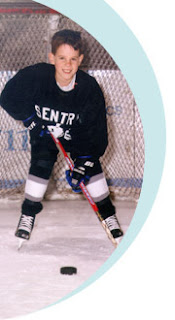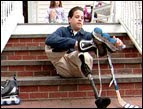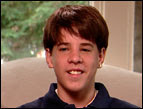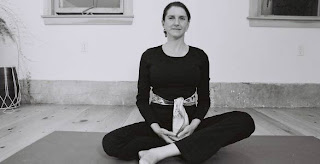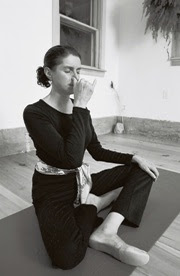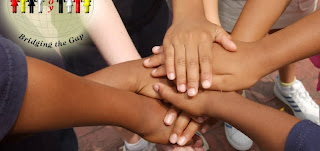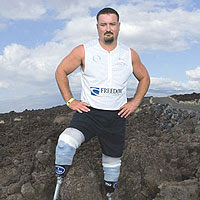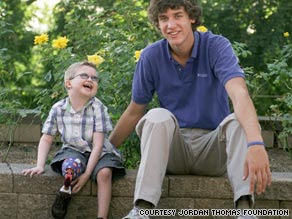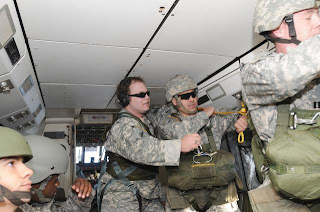
By JIM SEIMAS
A year ago, Soquel High's Christian Bauerle suffered a stroke on the football field that left him fighting for his life.
It's been a remarkable recovery for the newly turned 17-year-old, who was left temporarily paralyzed last August.
Bauerle -- described by Knights coaches as the best athlete in the junior class before the stroke -- has not only learned to walk, talk and eat again, he's swimming, running and catching and throwing balls. He has been assured roster spots on both the Knights' football and basketball teams -- his inspirational story of rehabilitation ensured that.
Bauerle, however, isn't satisfied with just appearing in the team photo and sitting on the bench -- he wants to earn an on-court role for the Knights' basketball team, to be a contributor and fully regain his athletic prowess.
"I told him the other day, You can't let anybody put limits on you,'" said football coach Ron Myers. "And, thing is, no one is doubting him."
Because of the threat of further injury and conceivably another stroke on the football field, Bauerle is focused solely on basketball and on making himself the best player possible.
"I'm bummed I'm not going to play," Bauerle said of football, his first love. "But I'm lucky it worked out like it did. I got through it, so why worry? I've just got to bite the bullet and keep going."
While Bauerle has regained 80 percent of his skill set, according to his father, the motivated teenager is hardly pleased with his current status.
"I used to be really good," said Bauerle after a recent training session with Tom Curtiss, a Soquel-based personal basketball instructor. "But right now, I'm not good enough to be on the [basketball] team. My dribbling is not good, my shooting is not good. I know I can play with these guys, but I have crappy form. I have to get better."
He has two more months to get into playing shape.
For now, Bauerle's serving as manager on the football
Soquel High's Christian Bauerle makes a recovery from the stroke he suffered in 2008
team, which will keep him on the sidelines charting plays, getting water and boosting morale -- he's pretty good at that. He never stops smiling.
Bauerle aspires to be more than a name on a basketball's team roster -- he wants to be a contributor on the court. He realizes there's plenty more work to be done to make his goal reality.
The mere fact that Bauerle -- a tan and muscular 5-foot-10, 180-pounder -- is back on his feet, talking, laughing and accepting congratulations from everyone who crosses his path already makes his story remarkable.
A year ago Saturday, the setting wasn't so pretty. It was downright terrifying, if you ask his father.
"It was a grim as grim can get without dying," Randy Bauerle said of what he witnessed before his son's surgery Aug. 29, 2008. "They said if he makes it through surgery he might not be any better than he was. And he was basically comatose. The [doctors] don't pull any punches. They don't give you any false hope at all. He couldn't talk, couldn't eat, he couldn't move. He was basically a vegetable at that point."
On Aug. 28, 2008, while playing in the Santa Cruz Coast Athletic League junior varsity jamboree, Bauerle's athletic career, and life as he knew it, changed. Shortly after making a tackle, Bauerle removed himself from the scrimmage because he didn't feel right and underwent testing on the sideline.
He said the left side of his body was shaking and that his right leg felt like it was bouncing.
Minutes later, when the jamboree ended, Bauerle, who played quarterback and cornerback, collapsed as he attempted to join teammates at a meeting near the end zone.
It was a hectic scene, said Myers, then the school's athletic director.
"You could tell something different was going on, something extreme," Myers said. "I remember sprinting the entire length of the football field to get the sheriff to get an ambulance. I had a hamstring injury days from days earlier -- it's amazing what adrenaline will do. I didn't stop the whole way."
No one on the field knew what was going on, just that Bauerle needed medical attention fast. In reality, he had several blood clots in his brain stem artery, causing the then 16-year-old to suffer the first of several strokes.
The strokes affected his memory, but Bauerle recalls one thing -- he was and is unable to control his laughter.
"The scrimmage ended and I was walking to the end zone," Bauerle said. "I couldn't do that. After that, it gets fuzzy. I know I threw up. They were asking me to say the names of the coaches and I was busting up. I was laughing the entire time at Dominican [Hospital] and unconscious on the helicopter ride to [Stanford University Medical Center]."
On Aug. 29, 2008, he had surgery to remove the blood clots from his brain stem.
"As bad as Aug. 28 was, Aug. 29 was the worst day I've had in my life -- by far," said Randy, an accountant in Los Gatos. "I didn't know if I was ever going to see my boy alive again when I kissed him going into the operation."
At Soquel, several football players left class to go into a private room and think of their fallen teammate.
"That was a blow," said teammate Paul Morgan. "Christian was like a brother to me. There were like 10 of us who went into a separate room. We were sitting together, praying and crying."
After the surgery, Bauerle lay motionless. He said he could feel his body but was unable to talk.
"The first thing I remember is the nurse changing my diapers," said Bauerle, who was lying on his back. "I had things in my neck and mouth, tubes all over me. I could feel my body, except the right side. It was like I was lying on it. It was really weird."
At least he was alive.
About 795,000 people suffer a stroke each year -- 25 percent of the victims are under age 65, according to strokecenter.org. More than 140,000 people die each year from stroke in the United States, making it the third leading cause of death in the country and a leading cause of serious, long-term disability.
Bauerle spent two motionless weeks in his Stanford hospital bed. His frame was in the process of whittling to 135 pounds.
"We were just so numb," Randy said. "After the surgery, we got the grimmest prognosis from the doctor: that if he survived, half his body would be non-functional. My face was in my hands and [I was crying], all that stuff. But my uncle, Jack Sullivan, he's the leader of the family. He's like Ronald Reagan, Bill Walsh and Phil Jackson. He can make anyone feel positive. When he says something, you listen. And he said, We don't give up.' At that point, he helped guide me on helping Christian."

And then fate stepped in.
The simple movement of his left arm gave doctors hope that Bauerle might respond to aggressive physical therapy. First he'd need to undergo a tracheotomy and be fitted with a gastric feeding tube.
Days later, Santa Clara Valley Medical Center's Rehabilitation Center agreed to take Bauerle as a patient.
Bauerle, still unable to refrain from laughing at times as a side effect from the stroke, said he had no choice but to be driven.
"I'm always laughing," said Bauerle, whose voice sometimes gets deep. "That probably helped keep me in a good mood. It's not like I was crying or something."
Heavily medicated after the surgeries, Bauerle remembers the first time he found himself sitting in a wheelchair at Valley Medical. He yearned to stand up, but that wasn't going to happen anytime soon -- it took three people to lift him from his hospital bed to the wheelchair. He couldn't move any part of his body.
He wanted to pass a football and basketball to his teammates again. But, more than anything, he wanted to take his dog Maverick, a 3-year-old Lab and golden retriever mix, for walks.
"I'm not going to do this," said Bauerle, thinking of life in a wheelchair. "I'm done with this. ... Right away, I knew if I was to get out of the situation, I had to work my butt off."
It was a daily grind. Initially, something as simple as standing was an exercise in futility. Bauerle's cardiovascular system, like many bedridden people, was initially unresponsive to being vertical, causing him to faint.
His rehab in San Jose was an eight-week program, one filled with baby steps. Hanging on each step was Bauerle's family, including mother Jennifer, stepmother Karen and siblings Matt, 20, Derek, 11, and Ashley, 3, and seemingly the entire Soquel community. A Web site, christianbauerle.blogspot.com, was set up to keep the public abreast of his progress.
"It was just little by little," Randy said, "little victories every day."
Family friend Bill Fields, a physical therapist at Fields in Motion in Campbell, was one of many who helped Bauerle rehab.
"Because I only saw him once a week, his progression was outstanding," said Fields, noting he gave Randy exercises that he could put Christian through. "When I first saw him, he had no volitional movement of his upper extremities, aside from twitching his finger. Two times later, he's trying to throw a Nerf basketball at a target."
Randy filmed his son's progress with his cell phone and sent footage to friends and family in e-mails.
When football coach Myers received them, he shared the footage with his players, many of whom later made trips to the hospital to cheer their fallen teammate.
On Nov. 7, Bauerle was released from Valley Med's rehab center. That night, he attended the Knights' game against Scotts Valley, showing up in the locker room for a varsity team meeting prior to the kickoff and standing on the sideline the duration of the game.
Still, Bauerle was hardly himself, his father said.
He walked like a 70-year-old man, but to his parents, he looked like Olympic sprinter Carl Lewis.
"He jumped one inch his last week of therapy," Randy said. "We wanted him to be there one week longer -- it was all an insurance thing."
Now, he can nearly touch a 10-foot-high basketball rim. In his prime, he could grab it.
Still, the treatment went so well, Valley Med decided to use him as a poster boy for its physical therapy program. Bauerle recently was featured in a video produced at the hospital to encourage others facing a similar crisis. He also plans to serve as a mentor in the program with Randy.
"I want to try to be inspirational to other people," said Bauerle, noting he had a mentor in close friend Shayne Perryman, a basketball player at Watsonville's St. Francis High who had brain surgery. "At that point, things are not going easy, but I saw Shayne could do it. ... I was in rehab for two months, but it seemed like forever. I remember wanting to bust out of there and go home."
Many call Bauerle's recovery a miracle. And he's become an inspiration to classmates, said his teammate Morgan, who gave up his No. 7 jersey to Bauerle to wear on the sidelines this season.
Bauerle wore No. 7 on junior varsity last season. Morgan now dons No. 4.
"You can't go out here and feel sorry for yourself when you see him out here," Morgan said of the difficulties of daily football practice. "He's an inspiration. He was 135 pounds when he was in the hospital and now he's as strong as an ox again. He's a giant inspiration. ... For him to be out here, giving him that [jersey number] was the least I could do. He'll always be part of the family and tradition. He earned his spot on the team."
After Bauerle's release from Valley Medical, the workload seemingly intensified. He had plenty of school work to catch up on. Moreover, his voice hadn't recovered from the surgery and stroke. One of the first classes he took upon returning to Soquel was choir. Another was weight training with Myers.
Bauerle participated in summer school and currently is taking seven classes.
The rehab never ended either.
Randy is constantly creating challenges with his son to push him to return to his old self.
A day after his release, Randy took his son to the stairs leading down to Seacliff State Beach, used by many athletes to train.
"It's about 150 steps," Randy said. "He walked it four times. I was hoping for two, if that."
Randy makes sure there is incentive for more difficult sessions, like the time he offered tickets to a San Francisco Giants game, endless supplies of food and a baseball cap if his son ran three miles on the sand from Seacliff to New Brighton State Beach.
He bought his son an iPhone last month when Christian started using his right hand more.
Eventually, Bauerle made his way back into the ocean.
Last month, he competed in the CORE Run-Swim-Run event, but was unable to finish.
He lacked the stamina, he said. But he gives the appearance of being fully recovered.
"He has such a positive attitude and work ethic," Myers said. "If you see him with his shirt off, he's like Adonis now, with all these muscles. He worked so hard."
The Bauerles own a weight set at their Soquel home and Randy said he's currently throwing a five-pound medicine ball with his son. Part of the goal is to get him back in playing condition for basketball season.
He's taking private lessons with Curtiss, who runs Shot Science.
At a session Thursday, Bauerle dribbled the ball through his legs, working it around his body in a Figure 8 drill. His tongue hung from his mouth as he focused intently on maintaining possession.
Seconds later, he dribbled two balls simultaneously the length of the court. Every few dribbles, Bauerle had to chase a wayward ball. He smiled, seemingly enjoying being tested.
"Head up, head up, look at the pretty girl," said Curtiss, encouraging his client as he dribbled.
Then Bauerle worked on driving to the basket aggressively for layups and arcing the ball on short-range jumpers. Beads of sweat streamed from his tan forehead onto the basketball court. His royal blue Air Jordan T-shirt was drenched.
After practice, Bauerle hiked over a hill to Soquel's football field to watch practice and lend a hand, if needed.
Teammates howled when they noticed his arrival and declared their love for him. One teammate asked to be featured in the Christian Bauerle life story when Hollywood comes knocking.
They know where he was in his worst state and what it took to get to his current state.
The coaches' response to him isn't much different.
"He may not be the player he was before or potentially what he could have been," said Knights basketball coach Stu Walters, "but just to see him put on a uniform will be unbelievable."
Bauerle isn't surprised by his progression. He'd done tougher things training for athletics.
"In my mind, I don't think it's a miracle," he said. "I knew from the beginning what I had to do. I feel like it's a job well done. I did my work and got rewarded for it."
And he's not done yet.
